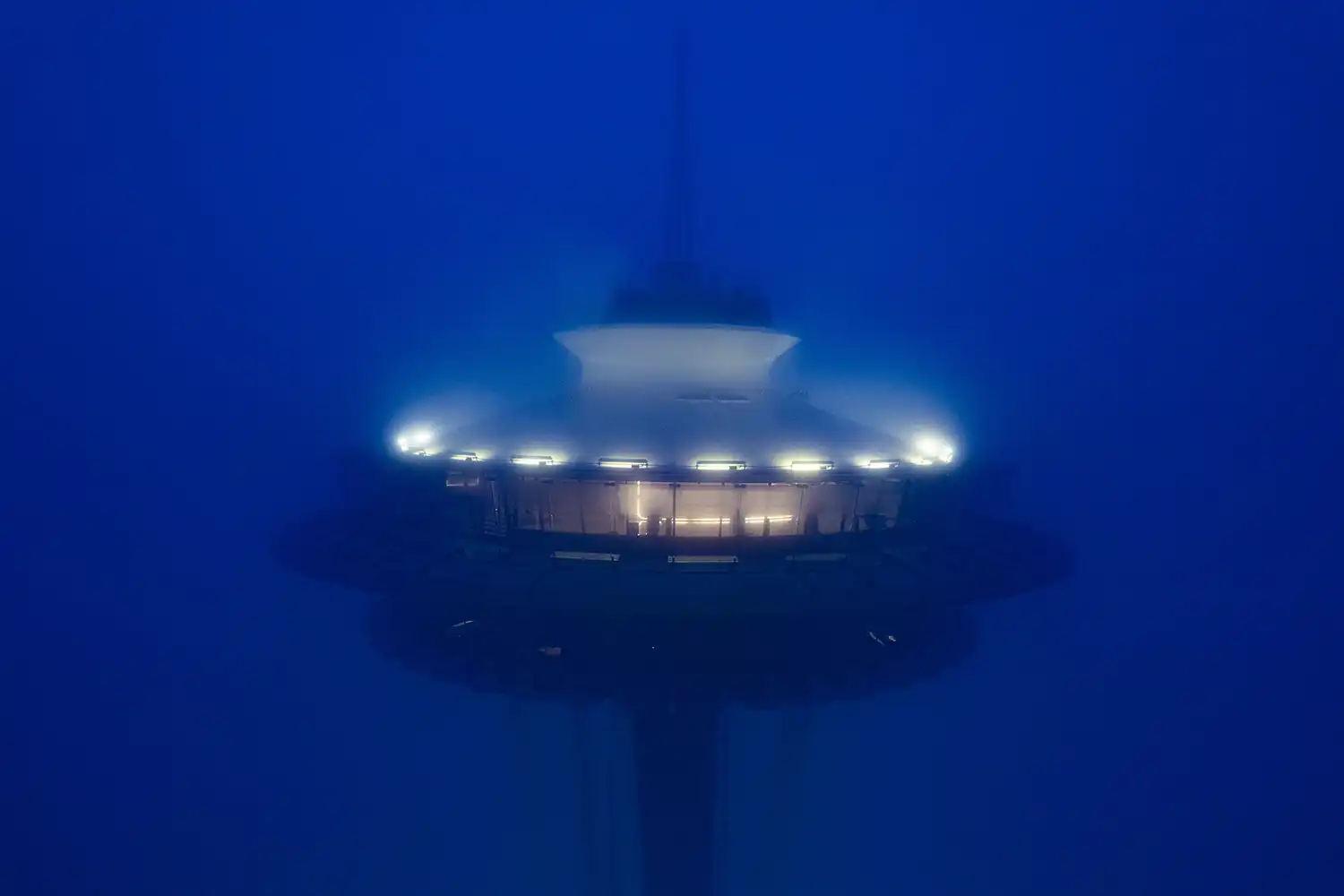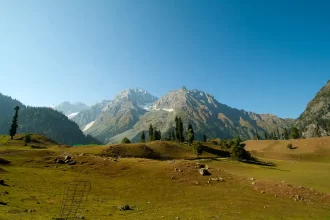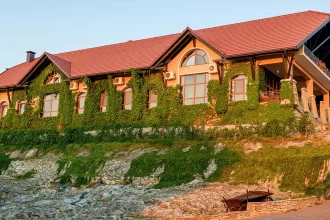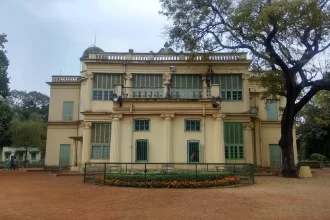One of Disney’s most iconic attractions, Space Mountain has been a source of wonder for visitors for 50 years. On January 15, 2025, Space Mountain will mark its 50th anniversary since its opening at Walt Disney World in Orlando, Florida. From its conceptual start to its versions worldwide, Space Mountain has followed technology and imagination into becoming one of the hallmarks of Disney’s commitment to the most thrilling experiences. Today, as we mark this significant anniversary, let us trace how it all started and evolved with a history that lingers on into this day.
The Origins and Evolution: A Journey Through History
Space Mountain traces its beginnings in Walt Disney’s imagination. According to Steven Vagnini, Content Strategy Manager for Walt Disney Archives, the concept of Space Mountain first came about in the 1960s as part of a grand reimagining of Disneyland’s Tomorrowland. Walt Disney envisioned a high-speed space voyage that would transport guests on a thrilling journey through the cosmos. This concept, however, was far ahead of its time, requiring technology to catch up to bring Walt’s vision to life.
It was a revolutionary idea,” Vagnini said. “Walt first had the idea for a high-speed trip through space, but the technology wasn’t quite there in the 1960s. It took years for Imagineers to develop the systems and innovations necessary to make it a reality.”
The technological difficulties did not deter Disney’s imagination from creating one of the most innovative and popular theme park attractions.
The Birth of Space Mountain: Walt Disney World (1975)
It was in the year 1971 when Walt Disney World finally opened its gates. There was an urgent need for a thrilling ride that could push the park further. The following year, Disney Imagineers revived Walt’s original idea and set out to develop the Space Mountain ride. This attraction officially opened on January 15, 1975, and it hit the ground running.
John Hench, one of the lead Imagineers, was present on opening day to watch for reactions of the first guests. Vagnini recalls one very emotional moment, when, having ridden the attraction, a guest knelt and kissed the carpet. The excitement of the ride proved so great that it became quickly apparent: Space Mountain had succeeded in doing something no one could have foreseen.
Hence, he recorded that people are not just exhilarated but felt touched in their psyche as if something has lived out and unforgettable in Space Mountain.
What makes space Mountain unique?
Space Mountain is known for an enclosed, dark ride that replicates a fast-paced rocket travel through the stars. It was the first in the world’s history to be a completely indoors and dark ride, thus a surprise factor, which made the experience more exciting for the guest. As said by Vagnini, this was also the first ride totally controlled by computer, which, at that time, was innovative.
Having the ride controlled by a computer allowed us to have two separate ride paths,” Vagnini explained. “This means that multiple rockets can travel through space at once without colliding, creating an incredibly immersive experience.
The darkness was an intentional design element. Guests never knew whether they would be turning left or right, or going up or down, making every twist and turn that much more thrilling. This made the unpredictability one of the signature thrills of the ride.
Space Mountain Expands: Disneyland and Other Parks
Soon after the success of Space Mountain at Walt Disney World, Disney rapidly turned its focus toward opening an equivalent attraction at Disneyland in California, where the original concept had originated. On May 27, 1977, Disneyland’s Space Mountain was opened; however, it was not identical to its version in Florida.
Disneyland is a little bit different, Vagnini explained. It has one track, compared to the two tracks at Walt Disney World. Disneyland’s version was also a little bit longer, but Disney World’s version is taller, at 183 feet tall.
The design of each version is different, and that is part of Disney’s philosophy of treating attractions differently in each park, based on the location and audience. The ride vehicles were also different between the two parks; Disneyland had side-by-side seating, while Disney World had single-seat rows.
Innovations and Overlays: Constant Evolution
Space Mountain’s legacy has been one of continuous evolution. Disney has over the years done several enhancements and updates to make the ride fresh and exciting for visitors.
In 2005, Disneyland completely overhauled its Space Mountain theme park ride and added a new musical score from composer Michael Giacchino. Disney, a few years later, had the Rockin’ Space Mountain overlay featuring the Red Hot Chili Peppers music. It eventually transformed into a spooky Halloween overlay called Space Mountain Ghost Galaxy in 2009.
Tokyo Disneyland opened a version of Space Mountain in 1983, which bore many similarities to the one in Disneyland but included some unique features that would appeal to Japanese tastes. Vagnini pointed out that the Tokyo version opened with a similar track design but was to be radically reimagined starting in 2027, adding new immersive effects.
Space Mountain in Paris and Hong Kong: International Reach
The influence of Space Mountain became global, and variations of the ride began opening throughout Disney parks worldwide. The first major deviation from the original concept was Space Mountain De la Terre à la Lune, which opened in 1995 at Disneyland Paris. This one was inspired by Jules Verne’s novel “From the Earth to the Moon” and had a canon-style launch rather than the chain lift used in most other incarnations of Space Mountain. It was also the first Disney thrill ride to feature onboard audio and inversions, which made it a unique addition to the Space Mountain family.
In 2005, Hong Kong Disneyland launched its version of the ride, which was later rebranded as Hyperspace Mountain. This Star Wars-themed overlay featured a space battle with X-wing starfighters and TIE fighters, bringing the galaxy far, far away into the Space Mountain experience.
Space Mountain and TRON: A New Frontier
Disney wanted to create something completely new at Shanghai Disneyland, drawing inspiration from the futuristic themes of TRON rather than Space Mountain. In 2016, the park opened the TRON Light cycle Power Run, a high-speed roller coaster that blends digital and physical realities. However, Walt Disney World’s Magic Kingdom introduced the TRON Light cycle Run in 2023, which now sits as a neighbour to the original Space Mountain in Tomorrowland.
Even with this new addition, Space Mountain is still one of the classic favourites, and its continued popularity is a testament to Disney’s ability to merge innovation with nostalgia.
Who may ride Space Mountain?
Space Mountain is an experience that is geared for a family audience. Minimum height requirements do vary by venue, with minimum space mountain height: 44 in. at DisneyWorld: 40 at Disneyland. Some guests of this attraction are particularly well-suited to all age groups, allowing it to become one that lots of younger audiences take as being grown up, or at least getting older, while having probably visiting it with those close to their lives many times.
“Some have called it a rite of passage,” Vagnini said. “It’s something that families can share across multiple generations, and it has a timeless appeal that continues to make it one of the most popular attractions across Disney parks.”
Space Mountain: A Timeless Classic
The fact that Space Mountain is celebrating its 50th year has already shown much more about an attraction beyond just an enjoyable ride. It symbolizes the innovative mind of Walt Disney and the magic that lives long. From dark indoors to modern high-tech advancements, Space Mountain continues evolving but remains at its core that it is indeed a journey to the stars, which should thrill all travelers.
Currently, as the attraction continues to mesmerize Disney followers across the world, it lives on as the epitome of imagination and adventure, just like Walt Disney saw it 50 years ago. Space Mountain was far more than a ride; it was a landmark of Disney as a company moving continually to push new boundaries in what entertainment could encompass while creating timeless moments.







